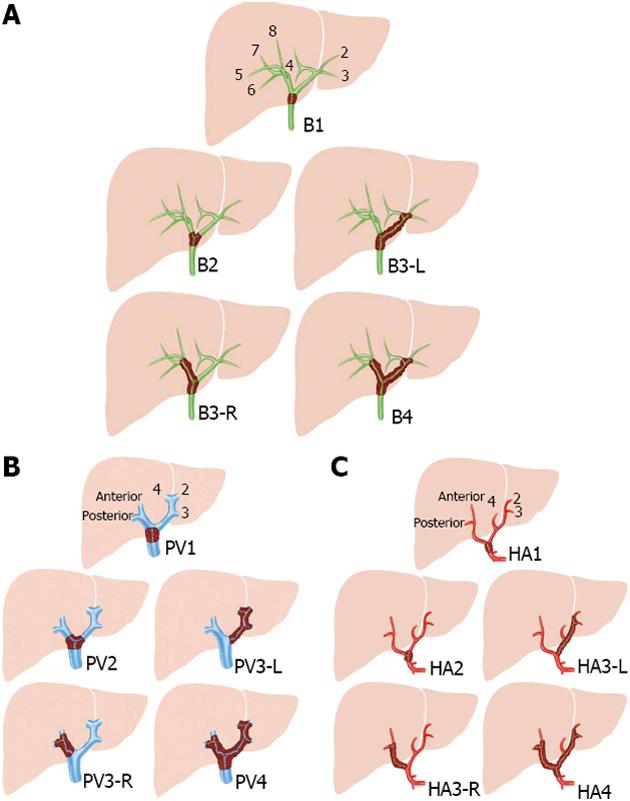Copyright
©2013 Baishideng Publishing Group Co.
World J Gastrointest Oncol. Jul 15, 2013; 5(7): 132-138
Published online Jul 15, 2013. doi: 10.4251/wjgo.v5.i7.132
Published online Jul 15, 2013. doi: 10.4251/wjgo.v5.i7.132
Figure 1 Morphologic classification of cholangiocarcinoma.
A: Mass-forming; B: Periductal-infiltrating; C: Intraductal-growing.
Figure 2 Bismuth-Corlette classification of Perihilar (Klatskin) tumors.
TypeI: Proximal bile duct tumor that do not extend to the bifurcation; TypeII: Tumor extend to the bifurcation without extension into the intrahepatic bile ducts; TypeIIIa: Tumoral occlusion of the common hepatic duct and the right hepatic duct; TypeIIIb: Tumoral occlusion of the common hepatic duct and the left hepatic duct; Type IV: Tumor involving the confluence and both the right and left hepatic ducts.
Figure 3 Consensus classification from the European Hepato-Pancreato-Biliary Association.
Involvement of the portal vein or hepatic artery is considered when the tumor encompasses more than 180º of the circumference. A: Biliary involvement (B), based on the Bismuth-Corlette classification; B: Portal involvement; C: Arterial involvement. Adapted from Deoliveira et al [24].
- Citation: Suarez-Munoz MA, Fernandez-Aguilar JL, Sanchez-Perez B, Perez-Daga JA, Garcia-Albiach B, Pulido-Roa Y, Marin-Camero N, Santoyo-Santoyo J. Risk factors and classifications of hilar cholangiocarcinoma. World J Gastrointest Oncol 2013; 5(7): 132-138
- URL: https://www.wjgnet.com/1948-5204/full/v5/i7/132.htm
- DOI: https://dx.doi.org/10.4251/wjgo.v5.i7.132











